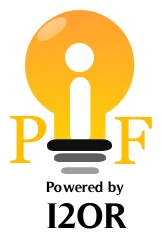Gastropod Community Structure as a Water Quality Bioindicator in Lake Rawa Pening Aquaculture Area, Semarang, Central Java, Indonesia |
| ( Volume 9 Issue 6,June 2023 ) OPEN ACCESS |
| Author(s): |
Isman Nasik, Rully Rahadian, Sapto Putro Purnomo |
| Keywords: |
|
Gastropod, Community Structure, Biomonitoring, Polyculture, Monoculture, Lake Rawa Pening |
| Abstract: |
|
Gastropods are a group of animals that have a soft body and are protected by a shell on the outside of their body. This group of animals usually tends to live sedentary with slow movements. These animals are also sensitive to changes in water quality so that they can be used as bioindicators of aquatic environmental quality. Lake Rawa Pening is a freshwater area which has an area of 2,380 hectares. The purpose of this study was to analyze the structure of the gastropod community and determine the condition of environmental quality and environmental status in the Lake Rawa Pening aquaculture area. Sediment sampling was carried out in polyculture, monoculture aquaculture areas and the Lake Rawa Pening reference area with a distance between sampling locations of ±1 km. Sampling was carried out by purposive sampling, consisting of three sampling locations with three replications. The results showed that there were 8 species of gastropods found in three locations. The most dominant species in polyculture, monoculture and reference locations were Filopaludina javanica, Ferrisia sp, and Melanoides tuberculata. The diversity index (H') at polyculture, monoculture and reference cultivation locations is in the low category with low community stability. Evenness index (e) in polyculture, monoculture and reference areas in October tends to be stable and has a high level of uniformity. However, there was a downward trend in the Evenness Index (e) in November and December. The dominance index (D) at polyculture, monoculture and reference areas is in the high category which indicates that certain species dominate. Abiotic factors that affect the abundance of macrobenthic molluscs are temperature, pH, dissolved oxygen (DO), and also soil sediment structure. The environmental status obtained in the polyculture and monoculture cultivation areas from October to December and the reference areas in October and November showed disturbed conditions. Meanwhile, the environmental status of the reference area in December showed that the condition of the waters in the area was slightly disturbed. |
 DOI :
DOI :
|
| Paper Statistics: |
| Cite this Article: |
| Click here to get all Styles of Citation using DOI of the article. |
 Click Here for
Click Here for Track Your Paper

 Call for Paper
Call for Paper
